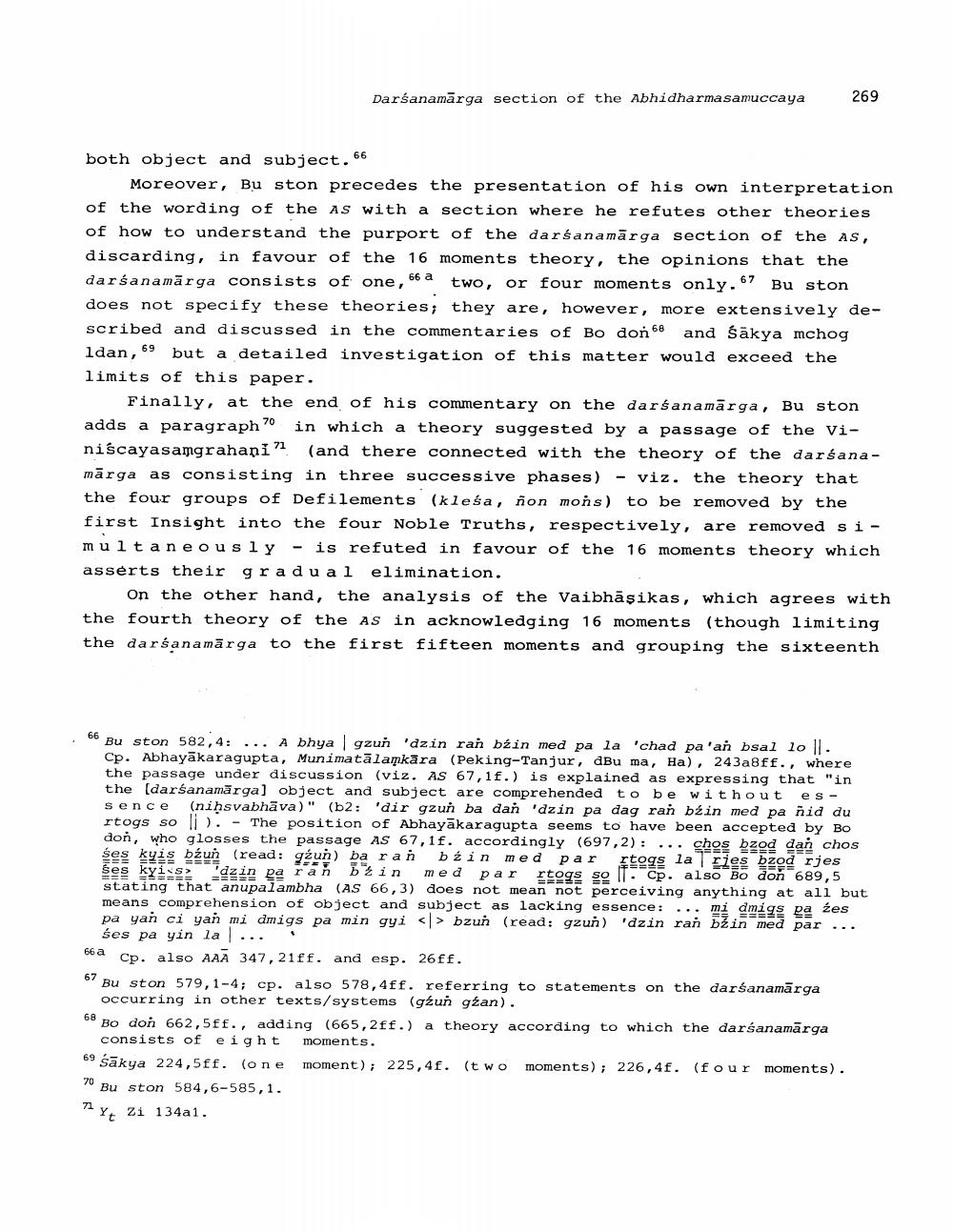________________
both object and subject.66
66 a
Moreover, Bu ston precedes the presentation of his own interpretation of the wording of the AS with a section where he refutes other theories of how to understand the purport of the darśanamarga section of the AS, discarding, in favour of the 16 moments theory, the opinions that the darśanamarga consists of one, two, or four moments only. 6 67 Bu ston does not specify these theories; they are, however, more extensively described and discussed in the commentaries of Bo don 66 68 and Sakya mchog ldan, but a detailed investigation of this matter would exceed the limits of this paper.
Finally, at the end of his commentary on the darśanamarga, Bu ston adds a paragraph 70 in which a theory suggested by a passage of the Viniscayasamgrahani" (and there connected with the theory of the darśanamārga as consisting in three successive phases) viz. the theory that the four groups of Defilements (kleśa, non mons) to be removed by the first Insight into the four Noble Truths, respectively, are removed simultaneously is refuted in favour of the 16 moments theory which asserts their gradual elimination.
On the other hand, the analysis of the Vaibhasikas, which agrees with the fourth theory of the AS in acknowledging 16 moments (though limiting the darśanamarga to the first fifteen moments and grouping the sixteenth
69
Darśanamārga section of the Abhidharmasamuccaya
71
-
66
Bu ston 582,4: A bhya gzun 'dzin rah bźin med pa la 'chad pa'ah bsal lo . Cp. Abhayakaragupta, Munimatalamkāra (Peking-Tanjur, dBu ma, Ha), 243a8ff., where the passage under discussion (viz. AS 67,1f.) is explained as expressing that "in the [darśanamarga] object and subject are comprehended to be without es - sence (niḥsvabhāva)" (b2: 'dir gzun ba daň 'dzin pa dag rah bźin med pa ñid du rtogs so). The position of Abhayakaragupta seems to have been accepted by Bo don, who glosses the passage AS 67,1f. accordingly (697,2): chos bzod dan chos ses kyis bźun (read: gźun) ba ran bźin med par rtogs la ries bzod rjes ses kyis 'dzin pa ran bin med par rtogs so. Cp. also Bo don 689,5 stating that anupalambha (AS 66,3) does not mean not perceiving anything at all but means comprehension of object and subject as lacking essence: mi dmigs pa źes pa yah ci yan mi dmigs pa min gyi <> bzuń (read: gzun) 'dzin rah bźin med par ses pa yin la...
66 a Cp. also AAA 347, 21ff. and esp. 26ff.
67
Bu ston 579,1-4; cp. also 578,4ff. referring to statements on the darśanamārga occurring in other texts/systems (gźun gźan).
68
Bo don 662,5ff., adding (665,2ff.) a theory according to which the darśanamarga consists of eight moments.
69 śākya 224,5ff. (one moment); 225,4f. (two moments); 226,4f. (four moments).
70
Bu ston 584,6-585,1.
Yt Zi 134a1.
269




